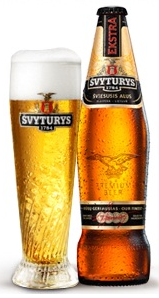CANTINE SAN MARCO
LAZIO
Established in 1972 and placed on the hearth of Castelli Romani, to the south-east of Rome, SAN MARCO boasts a wide range of high quality DOC & IGT wines able to satisfy all market’s targets: the uncontaminated earth of volcanic origin, rich in potassium, phosphorus, magnesium and poor in nitrogen, the mild climate all the year and the passion for farming make this area the ideal place for the cultivation of the vine and the production of high quality wines.
SAN MARCO is a young and dynamic Wine Company, well established and with a huge network of sales, positively export oriented, exporting the 80% of the output in more than 40 countries worldwide.
Wines:
Tipica (Frascati DOC superiore - Lazio)
 |
Vitigni: Trebbiano Toscano, Malvasia di Candia, Malvasia Puntinata del Lazio, Bonvino con prevalenza di Malvasia Puntinata.
Tipologia terreno: Di origine vulcanica, ricco di potassio, fosforo, calcio e magnesio, esposto a Sud con escursione termica contenuta, ben ventilato.
Vendemmia: Al raggiungimento della giusta maturazione dei singoli vitigni vengono scelti accuratamente i grappoli migliori.
Vinificazione: Dai vigneti allevati con sistemi tradizionali di tipo Guyot o cordone speronato si ottiene un uvaggio che viene vinificato con spremitura soffice ed il mosto ottenuto viene decantato a freddo e fatto fermentare a temperatura controllata. Maturazione in acciaio e affinamento in bottiglia.
Crio 8 (Frascati DOC superiore - Lazio)
 |
Vitigni: Trebbiano Toscano, Malvasia di Candia, Bellone e Malvasia Puntinata del Lazio, con prevalenza di Malvasia Puntinata del Lazio.
Tipologia terreno: Di origine vulcanica, ricco di potassio, fosforo, calcio e magnesio, esposto a Sud con escursione termica contenuta, ben ventilato.
Vendemmia: Al raggiungimento della giusta maturazione dei singoli vitigni vengono scelti accuratamente i grappoli migliori.
Vinificazione: Dopo una Criomacerazione delle uve a bassa temperatura per un minimo di 10 ore mediante l’applicazione di anidride carbonica (CO2) liquida si ricava un mosto con spremitura molto soffice che viene fatto fermentare a temperatura controllata in piccoli vasi vinari.
|
|
Meraco Bianco (Frascati DOC superiore - Lazio)
 |
Vitigni: Trebbiano Toscano, Malvasia di Candia, Malvasia Puntinata, Bonvino con prevalenza di Malvasia Puntinata del Lazio.
Tipologia terreno: Di origine vulcanica, ricco di potassio, fosforo, calcio e magnesio, esposto a Sud con escursione termica contenuta, ben ventilato.
Vigneti: Allevamento a Guyot doppio con una densità di 4.500 ceppi per ettaro. La produzione è di circa 80 quintali per ettaro molto più bassa di quella prevista dal disciplinare della DOC.
Vendemmia: Al raggiungimento della giusta maturazione dei singoli vitigni vengono scelti accuratamente i grappoli migliori.
Vinificazione e affinamento: Vino bianco di particolari caratteristiche , ottenuto esclusivamente da una accurata selezione di uve. Fermenta in carati di rovere da 225 litri e successivamente viene affinato per alcuni mesi in bottiglia. Un’innovazione assoluta della San Marco Frascati.
|
Meraco Rosso (Rosso IGT Lazio)
Vitigni: E’ un blend di Sangiovese, Cesanese e Cabernet Sauvignon.
Tipologia terreno: Di origine vulcanica, ricco di Sali minerali (in particolare fosforo, potassio, calcio
e magnesio) esposto a Sud con escursione termica contenuta, ben ventilato.
Vigneti: Allevati a Guyot con una densità di impianto di circa 3.500 ceppi per ettaro.
La resa è mediamente di 70-80 quintali per ettaro.
Vendemmia: Manuale, dopo una perfetta maturazione delle uve ed un’accurata scelta
dei grappoli.
Vinificazione: Fermentazione per 15 giorni a temperature controllate di 28-30° C.
Dopo la svinatura il vino viene conservato in serbatoi d’acciaio.
Quindi matura in barrique da 225 litri per 12 mesi. L’ultima fase è
l’affinamento in bottiglia per 6 mesi.
Solo Shiraz (Rosso IGT Lazio)
 |
Vitigni: Shiraz al 100%
Tipologia terreno: Collinare, ben ventilato, di origine vulcanica ricco di sali minerali (potassio, fosforo e magnesio).
Vigneti: Allevamento a Guyot con una densità di 4.500 ceppi per ettaro. La produzione si aggira sugli 80 quintali per ettaro.
Vendemmia: Manuale, grappolo per grappolo. Al raggiungimento della giusta maturazione dei frutti si procede ad un’accurata scelta delle uve.
Solo Merlot (Rosso IGT Lazio)
|
 |
Vitigni: Merlot al 100%
Tipologia terreno: Collinare, ben ventilato, di origine vulcanica ricco di sali minerali (potassio, fosforo e magnesio).
Vigneti: Allevamento a Guyot con una densità di 4.500 ceppi per ettaro. La produzione si aggira sugli 80 quintali per ettaro.
Vendemmia: Manuale, grappolo per grappolo. Al raggiungimento della piena maturazione dei frutti si procede ad un’accurata scelta delle uve.
Vinificazione: Attraverso la “vendemmia fredda”.
|
Solo Malvasia (Bianco IGT Lazio)
 |
Vitigni: Malvasia del Lazio (Malvasia puntinata) al 100%
Tipologia terreno: Collinare, ben ventilato, di origine vulcanica ricco di sali minerali (potassio, fosforo e magnesio).
Vigneti: Allevamento a Guyot con una densità di 4.500 ceppi per ettaro. La produzione si aggira sugli 80 quintali per ettaro.
Vendemmia: Manuale, grappolo per grappolo. Al raggiungimento della giusta maturazione dei frutti si procede ad un’accurata scelta delle uve.
Vinificazione: Attraverso la “vendemmia fredda”. Dopo la pressatura soffice delle uve, il mosto passa alla fase della macerazione prefermentativa a freddo attraverso la quale si preservano al massimo livello tutte le sostanze aromatiche del frutto con il drastico abbattimento delle ossidazioni.
|






















































